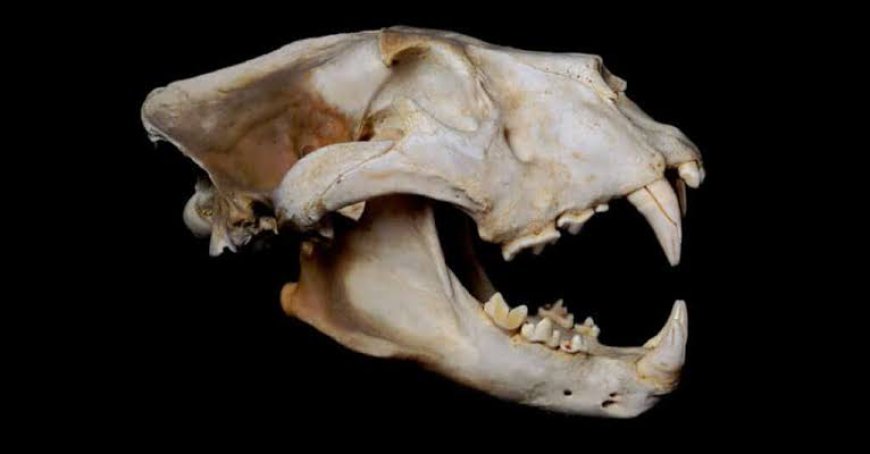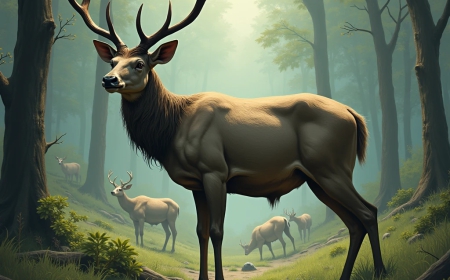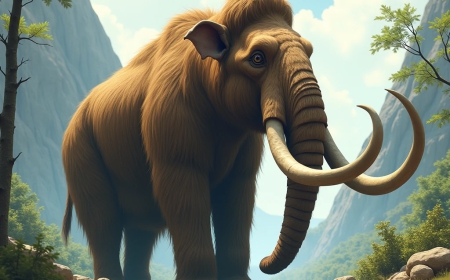Discovery of Human DNA in Lions' Teeth Unveils a Grim Historical Truth
The discovery of human DNA in the teeth of the infamous Tsavo man-eating lions, housed at Chicago's Field Museum, confirms a century-old tragic legend from 1898. During the construction of the Uganda-Mombasa railway in Kenya, two male lions reportedly killed and ate dozens of workers. Modern forensic analysis of the lions’ teeth revealed human DNA, offering scientific proof of their predation on humans. This breakthrough sheds light on the mystery behind the lions' unusual behavior, possibly driven by dental issues or environmental disruption. The findings also highlight the ongoing human-wildlife conflicts and the power of modern science to unravel historical events long considered legend.

Introduction
The world of history and science has been rocked by a fascinating discovery that seems to confirm one of the most tragic and terrifying stories ever told about human-wildlife conflict. In a breakthrough study, human DNA has been identified in the teeth of two infamous lions housed at Chicago's Field Museum—none other than the Tsavo man-eaters. This discovery, brought to light through advanced DNA analysis, breathes new life into a chilling tale that has haunted the imaginations of historians and wildlife enthusiasts for over a century.
The Tsavo lions' story is one that combines fear, mystery, and the untamed wilderness of East Africa. These lions, notorious for their unusual behavior, reportedly killed and consumed dozens of humans over the course of several months in 1898. Their actions earned them a permanent place in the annals of both natural history and local legend. Now, over a century later, modern science is shedding new light on this grisly saga, offering confirmation of the horrifying events that left such an indelible mark on history.
Historical Background
The tale of the Tsavo lions is one that has been passed down through generations, immortalized in both scholarly work and popular media. In 1898, during the construction of the Uganda-Mombasa railway in Kenya, workers began to mysteriously disappear. The perpetrators of these attacks were soon identified: two male lions that had developed an unusual taste for human flesh. Over the course of nine months, these lions were reported to have killed up to 135 people, though some accounts suggest a lower figure of around 35.
The Tsavo lions' unusual behavior puzzled experts. Unlike other lions, these predators worked in tandem and had a strange preference for hunting humans, rather than preying on their usual diet of zebras, wildebeest, and other animals native to the region. The killings continued unabated until Lieutenant Colonel John Henry Patterson, the chief engineer on the railway project, took matters into his own hands. In a dramatic hunt that would later become the subject of books and movies, including the well-known film *The Ghost and the Darkness*, Patterson finally managed to kill both lions. Their bodies were eventually preserved and are now on display at the Field Museum in Chicago.
For years, speculation has swirled around the reasons behind the lions' behavior. Some suggested disease or injury might have driven the lions to target humans, while others argued that the conditions created by the railway construction—a disruption of the lions' natural environment—had forced them into desperate and violent measures. Whatever the cause, the lions' gruesome legacy was set, and their bones held a dark secret that would not be uncovered for over a century.
The Discovery: Lions’ Teeth and Human DNA
In a stunning twist to this already macabre story, scientists recently examined the preserved remains of the Tsavo lions and made a shocking discovery. Using advanced techniques in genetic analysis, they found human DNA embedded in the lions' teeth. This breakthrough was made possible through meticulous forensic work, with researchers painstakingly extracting traces of DNA from the lions' dental remains, which had been preserved in the Field Museum for over a century.
The discovery was not only a confirmation of the oral history surrounding the lions but also a remarkable achievement in forensic science. The presence of human DNA in the lions' teeth directly links them to the deaths of the workers during the railway construction, providing scientific evidence that these predators did indeed consume human flesh.
According to the research team, this discovery was akin to solving a century-old murder case. The DNA evidence offered a tangible connection to the past, validating the accounts of Patterson and the surviving workers. It also opened new doors for understanding the behavioral anomalies of these predators.
The Science Behind the Discovery
The process of extracting and analyzing ancient DNA (aDNA) is a delicate and complex one. Forensic scientists had to overcome significant challenges in isolating the human genetic material from the lions' teeth. Given the age of the specimens and the degradation that typically occurs over time, the DNA was highly fragmented and required state-of-the-art techniques to reconstruct.
Researchers employed a method called "shotgun sequencing," which allowed them to sift through millions of DNA fragments, isolating the human sequences from the rest. These sequences were then compared to modern human DNA to confirm their origin. This process is not unlike that used in cold case investigations, where forensic experts analyze degraded or minimal DNA samples to solve decades-old crimes.
The significance of this discovery goes beyond confirming the lions' diet—it also showcases the power of modern science to unravel historical mysteries. In this case, technology provided definitive proof of a legend that had long lingered on the edges of plausibility.
Unraveling the Legend
For years, historians and scientists debated the authenticity of the claims surrounding the Tsavo lions. While Patterson's account was widely accepted, some critics argued that the scale of the killings had been exaggerated or that the lions' consumption of humans was not as extensive as claimed. The discovery of human DNA in their teeth, however, silences much of that skepticism.
The lions' behavior remains a topic of intense discussion. Why did they turn to human prey? Some researchers believe that dental issues may have contributed to the lions' predation on humans. One of the lions was found to have a severe tooth abscess, which could have made hunting larger prey like zebras and buffaloes too painful. Human flesh, being softer, might have been easier for the lions to consume. Others suggest that the lions’ habitat was disrupted by the railway construction, reducing their access to natural prey and forcing them into contact with humans.
This discovery also challenges assumptions about human-lion interactions in the late 19th century. It is a stark reminder of the perils faced by those who ventured into Africa during that time, particularly in the context of European colonial expansion and industrialization. The Tsavo lions, already infamous, now take their place as central figures in this larger narrative of human encroachment on wild spaces and the often devastating consequences.
Broader Implications
The confirmation of human DNA in the Tsavo lions' teeth offers more than just closure to a historical mystery; it provides insight into the nature of human-wildlife conflict. Throughout history, humans and predators have clashed over territory and resources, often with tragic results. The Tsavo incident is an extreme example of this, but it is by no means unique.
As human populations expand and encroach on wildlife habitats, such conflicts continue to occur. In modern times, lions and other large predators are increasingly coming into contact with human communities, often with fatal results for both sides. Conservationists argue that understanding the root causes of these conflicts—whether it be environmental disruption, loss of prey, or other factors—can help mitigate them in the future.
Moreover, this discovery underscores the importance of preserving historical specimens. The Tsavo lions’ remains, which have been on display for decades, were not just relics of the past but held valuable scientific data that could only be accessed with modern technology. As scientists continue to develop new techniques for analyzing ancient DNA and other biological materials, we can expect more revelations from the past to emerge.
Conclusion
The discovery of human DNA in the Tsavo lions' teeth is a profound reminder of the complex and often tragic relationship between humans and the natural world. It confirms the horrifying events of 1898, providing a scientific basis for a story that has long been a part of historical legend. But beyond the sensational nature of the tale, this discovery invites reflection on the broader themes of human-wildlife conflict, the fragility of ecosystems, and the power of modern science to illuminate the past.
As we continue to explore these intersections, the Tsavo lions will remain a powerful symbol of the dangers that can arise when human ambition collides with the forces of nature. In the end, their story is not just one of predation and survival, but also one of the enduring mysteries that science is only now beginning to unravel.















































